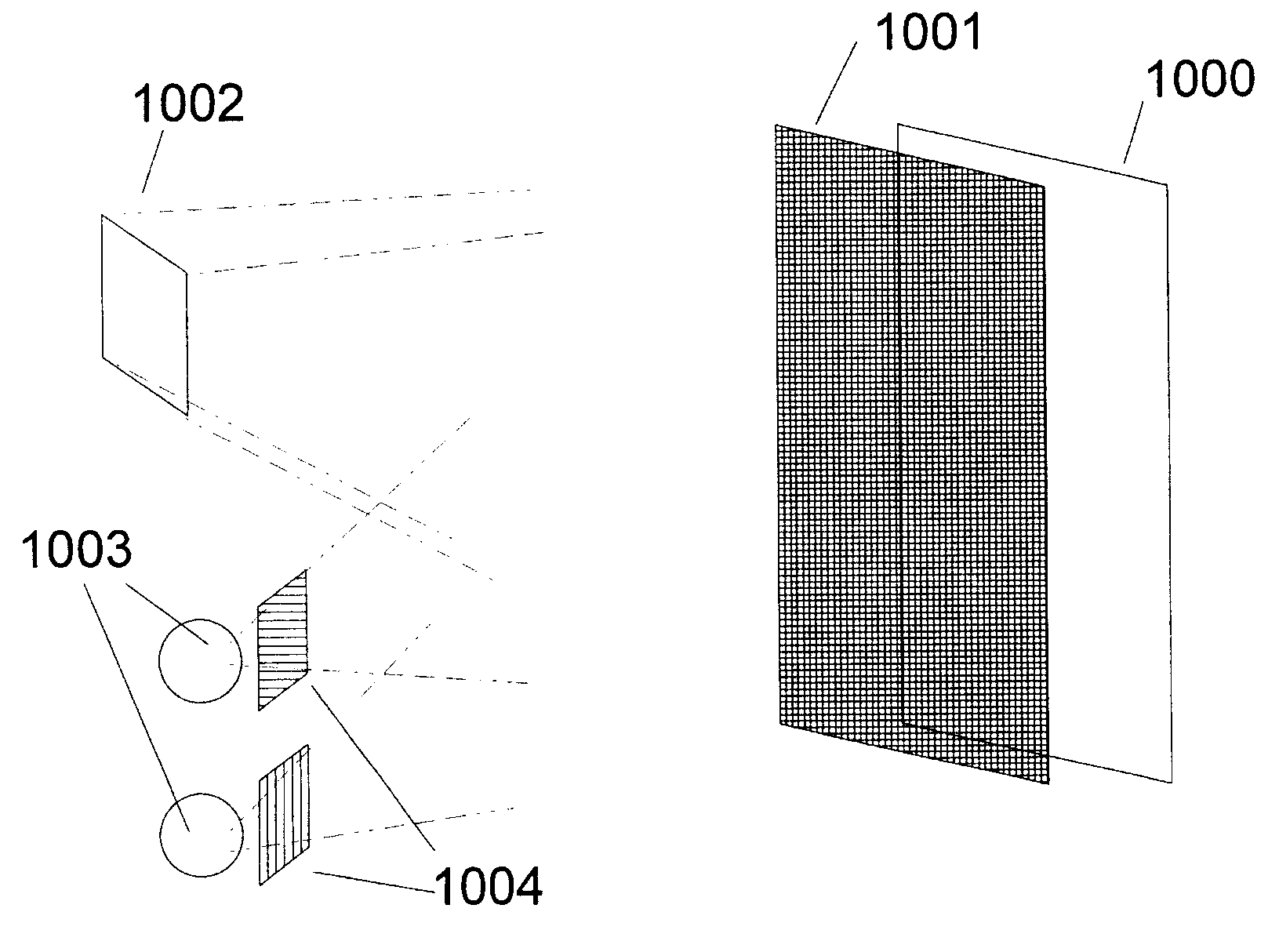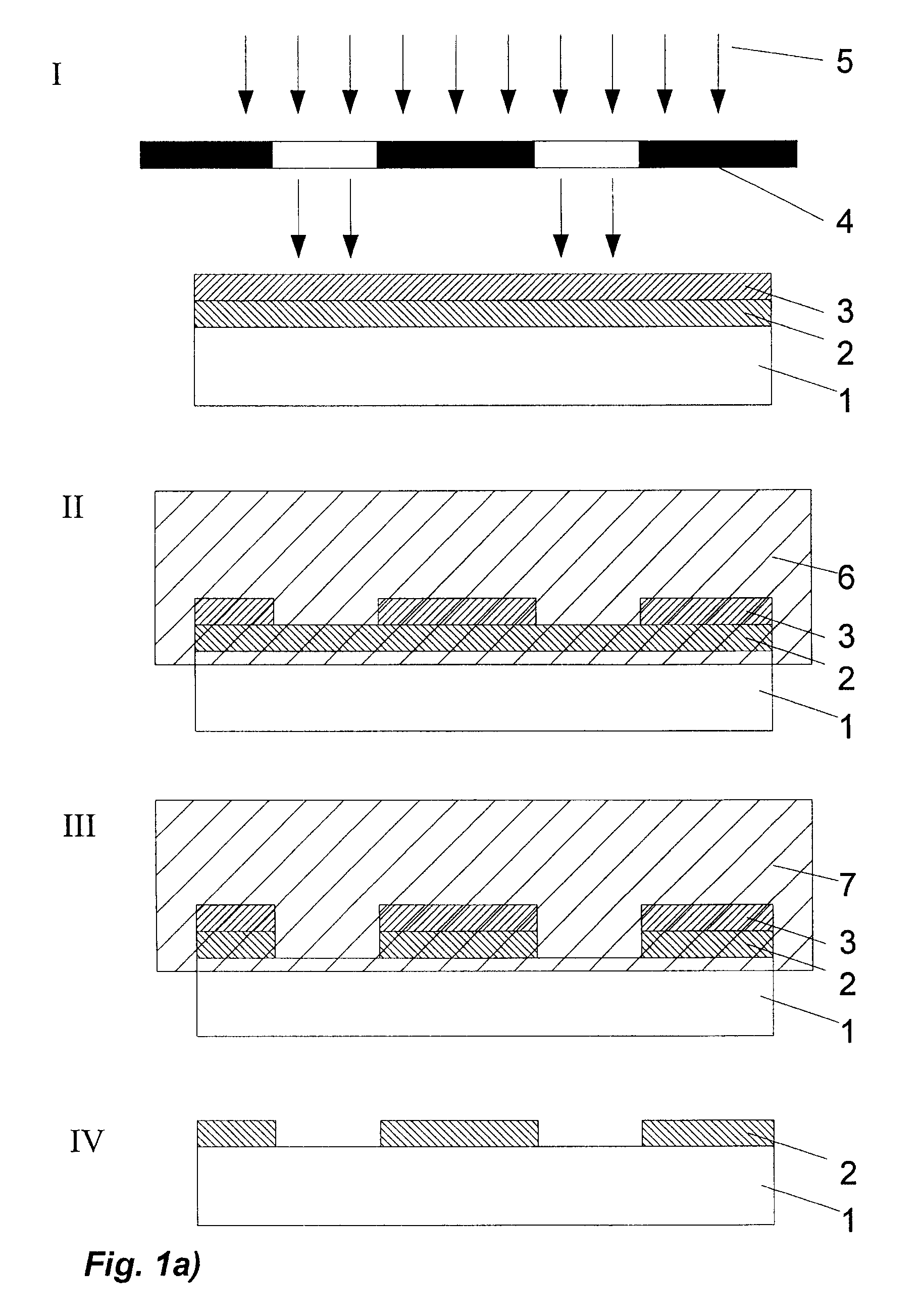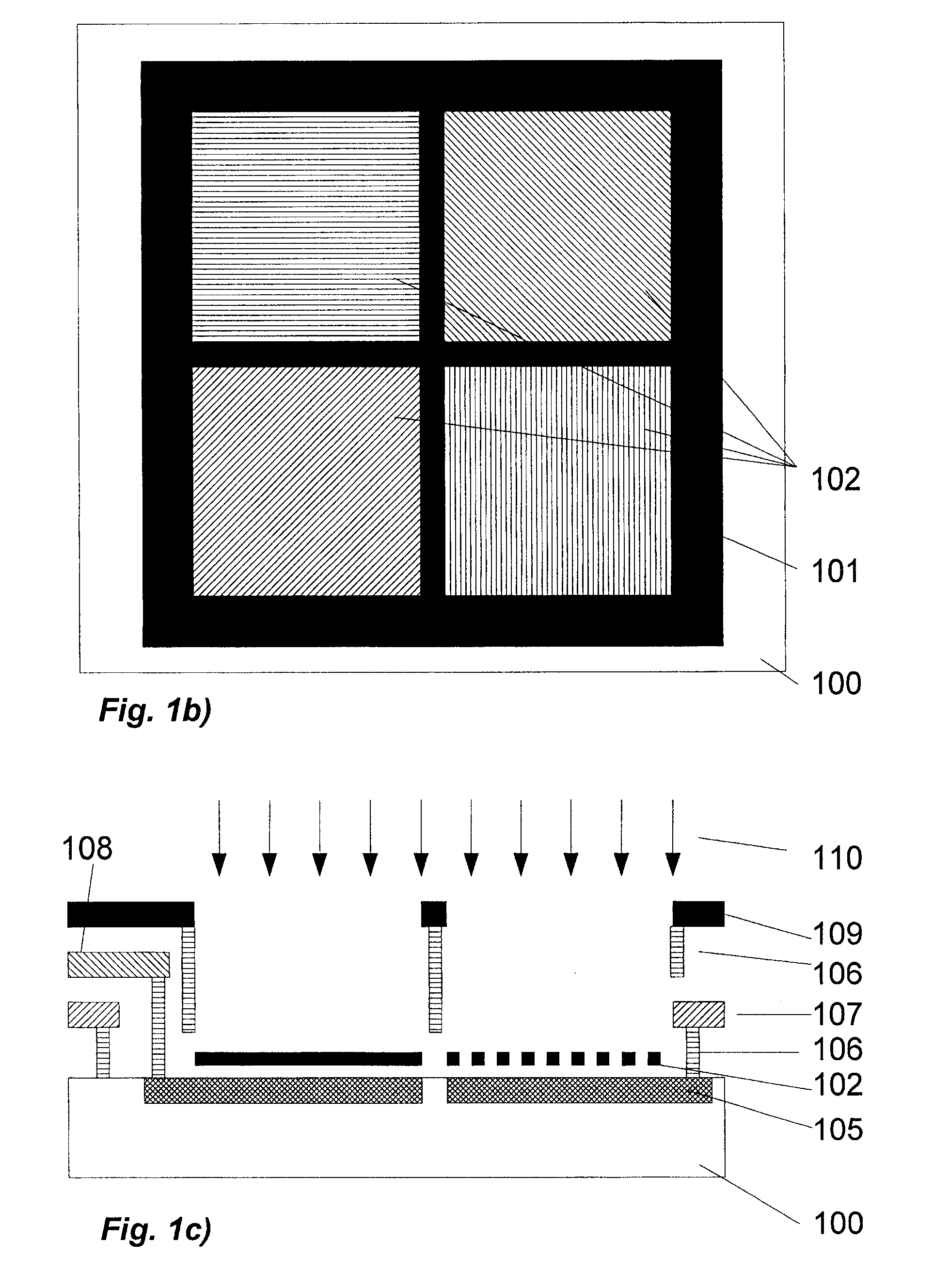Method for producing polarisation filters and use of polarisation-sensitive photo-sensors and polarisation-generating reproduction devices
a polarisation filter and photosensor technology, applied in the direction of optical radiation measurement, instruments, polarising elements, etc., can solve the problem of little contrast in structures of the order of 100 nm, and achieve the effect of less weight, reduced resolution and greater compactness
- Summary
- Abstract
- Description
- Claims
- Application Information
AI Technical Summary
Benefits of technology
Problems solved by technology
Method used
Image
Examples
example 1
Manufacture, Restricted to the Manufacturing Steps for Making an Integrated Circuit, of Structured Polarization Filters Using Photolithography
[0057]Whereas the manufacture of nanostructures of controlled orientation is fairly problematical, such a problem has long been solved in microelectronics. The structures are drawn by the CAD system, they are replicated, usually on an enlarged scale, on an exposure mask, and are photolithographically transferred from the exposure mask to a substrate respectively a wafer (FIG. 1a). As a rule first the wafer 1 is coated with a photoresist 3, then it is exposed through the exposure mask 4 whereby specific portions will respond to a subsequent chemical process, that is, they might be etched free by a solution 6. Another etching procedure may then be carried out using an etching solution 7 to structure a previously prepared full surface metal plating 2, or diffusing or implanting procedures are carried out. The remaining lacquer structures 3 in suc...
example 2
Manufacturing Structured Polarization Filters by Photolithography when Using Additional Manufacturing Steps Comparable to Those of Integrated Circuit Manufacture.
[0059]To make it possible to use a polarizing filter with short wavelengths light, that is in the visible range, implementation by other means than those discussed in example 1 is more economical. Because the large scale manufacture of polarization filters having appropriate properties is controlled, a combination of such sheets with lithographic methods may be employed to produce microstructured polarization filters. The most diverse manufacturing methods may be employed for the required polarization filters. Resin-imbedded nanotubes or nanowires also are applicable besides the conventional polymers. Such filters would be manufactured using comparable procedures with which large-area filters for instance are produced for LCD's. In other words, long-chain molecules, nanotubes or nanowires are oriented by an external force, ...
example 3
Polarization Sensors for Angle Measurement
[0065]A frequently encountered problem is measuring an angle at rotating parts, for instance to determine the position of a transducer (control stick, pedal etc.) or of a servo. As cited initially, commonplace measurement procedures incur restrictions for instance about resolution or adjustment tolerances as miniaturization increases and as the speed of measurement rises. Measuring angles by resorting to light's polarization may bypass many problems.
[0066]Conventionally a photosensor may be mounted for instance behind a rotatable polarization filter and be irradiated with polarized light of unknown polarization direction, and the signal measured at different angles of rotation and obeying Malus' law may be detected. When the signal is a maximum the orientation of the measuring polarization filter is identical with that of the incident light. Such a design is bulky and comparatively expensive. Also it presupposes that the signal being measure...
PUM
 Login to View More
Login to View More Abstract
Description
Claims
Application Information
 Login to View More
Login to View More - R&D
- Intellectual Property
- Life Sciences
- Materials
- Tech Scout
- Unparalleled Data Quality
- Higher Quality Content
- 60% Fewer Hallucinations
Browse by: Latest US Patents, China's latest patents, Technical Efficacy Thesaurus, Application Domain, Technology Topic, Popular Technical Reports.
© 2025 PatSnap. All rights reserved.Legal|Privacy policy|Modern Slavery Act Transparency Statement|Sitemap|About US| Contact US: help@patsnap.com



